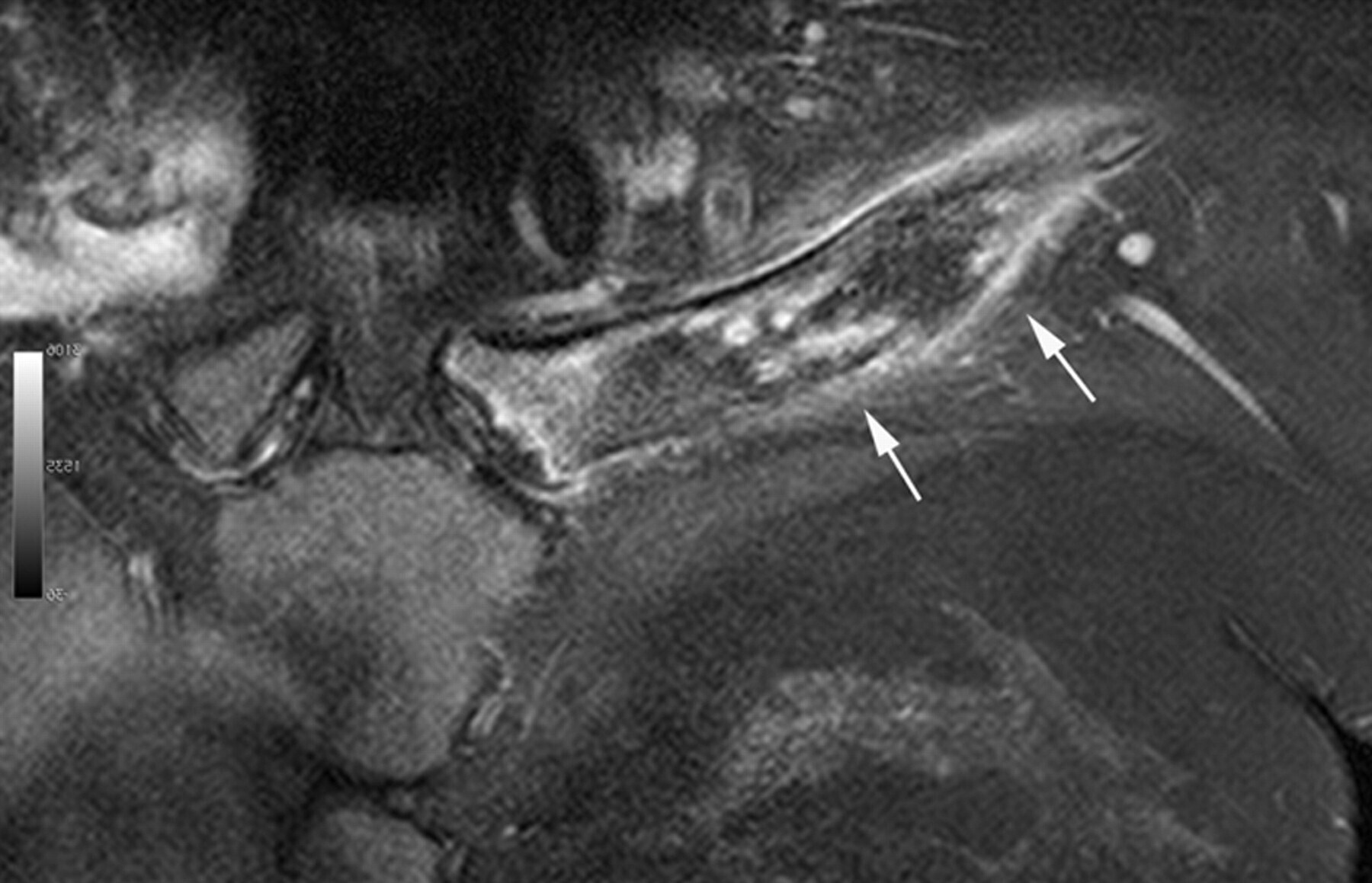
What is Chronic Recurrent Multifocal Osteomyelitis (CRMO)? It's a rare, nonbacterial inflammatory bone disorder that mostly affects kids and teens. CRMO causes recurring episodes of bone pain and inflammation without any bacterial infection. This condition can be tricky to diagnose because its symptoms often mimic other diseases. CRMO usually targets the long bones, pelvis, spine, and clavicle. Diagnosing CRMO involves clinical evaluation, imaging techniques like MRI, and sometimes a bone biopsy. Treatment focuses on managing pain and inflammation, often using NSAIDs, corticosteroids, and sometimes biologics. Understanding CRMO is crucial for improving the quality of life for those affected.
Key Takeaways:
- Chronic Recurrent Multifocal Osteomyelitis (CRMO) is a rare bone disorder primarily affecting children, causing recurrent inflammatory bone pain without bacterial involvement. Early diagnosis and proper management are crucial for minimizing complications.
- Imaging techniques like MRI play a vital role in diagnosing and monitoring CRMO, while treatment focuses on symptom control and reducing inflammation. Research into its pathophysiology and treatment is essential for improving outcomes.
What is Chronic Recurrent Multifocal Osteomyelitis (CRMO)?
Chronic Recurrent Multifocal Osteomyelitis (CRMO) is a rare, non-infectious inflammatory bone disorder. It primarily affects children and adolescents, causing significant discomfort and potential complications if not properly managed. Let's dive into some key facts about this condition.
- CRMO is an autoinflammatory bone disease characterized by recurrent episodes of inflammatory bone pain without any bacterial involvement.
- It is also known as chronic nonbacterial osteomyelitis (CNO).
- The condition is not associated with microorganisms, autoantibodies, or antigen-specific T cells.
Prevalence and Demographics
Understanding who is most affected by CRMO can help in early diagnosis and management.
- The exact prevalence of CRMO is not well-documented due to its rarity and frequent misdiagnosis.
- It is estimated to affect approximately 1-9 individuals per million worldwide.
- The female-to-male ratio is reported to be 2:1.
- The mean age of onset is around 11 years, with a range of 3 to 17 years.
Clinical Manifestations
CRMO presents with a variety of symptoms that can make diagnosis challenging.
- CRMO is clinically manifested by recurrent inflammatory bone pain.
- Pain can be localized to specific areas such as the metaphysis of long bones, the pelvis, the clavicle, and the spine.
- The condition often presents with joint symptoms, including arthralgia and arthritis.
- Symptoms are particularly common in the lower extremities and the spine.
Diagnostic Challenges
Diagnosing CRMO can be tricky due to its nonspecific symptoms and lack of specific tests.
- The diagnosis is typically based on clinical, radiologic, and pathological findings.
- Key diagnostic criteria include recurrent episodes of bone pain without a clear cause.
- Radiologic findings often show lytic lesions, sclerosis, cortical thickening, and periosteal reaction.
- MRI is the most sensitive imaging method, showing bone edema and asymptomatic bone lesions early.
- Bone biopsy may reveal inflammation, fibrosis, and the presence of plasma cells and neutrophils.
Imaging Techniques
Imaging is crucial for diagnosing and monitoring CRMO.
- MRI is the most sensitive imaging method for detecting bone edema and asymptomatic bone lesions.
- Whole-body MRI is particularly useful for identifying subclinical lesions and monitoring disease activity.
- Radiologic appearance can vary but typically includes mixed lytic and sclerotic lesions.
- Lesions are frequently metaphyseal or juxta-physeal.
Common Sites of Involvement
CRMO affects specific areas of the body more commonly than others.
- CRMO primarily affects the metaphysis of long bones, particularly the femoral and tibial metaphysis.
- Other common sites include the pelvis, spine, clavicle, and mandible.
- The vertebral skeleton is often involved multifocally.
- Involvement of small bones in the hands and feet is less common but can occur.
Inflammatory Markers
Inflammatory markers can help in diagnosing CRMO but are not definitive.
- Markers such as C-reactive protein (CRP), erythrocyte sedimentation rate (ESR), interleukin-6 (IL-6), and tumor necrosis factor-alpha (TNF-α) may increase during recurring episodes.
- Elevated markers can lead to misdiagnosis as bacterial osteomyelitis.
Differential Diagnosis
CRMO must be considered in the differential diagnosis of patients presenting with joint symptoms and bone lesions.
- CRMO should be considered when no microorganism growth is observed and no response to antibiotic treatment is obtained.
Treatment Options
There is no specific treatment for CRMO, and management focuses on symptom control and reducing inflammation.
- Nonsteroidal Anti-Inflammatory Drugs (NSAIDs) are initially used to manage pain and inflammation.
- Corticosteroids like prednisolone can provide temporary relief but may have significant side effects.
- Disease-Modifying Antirheumatic Drugs (DMARDs) such as methotrexate are commonly used to manage chronic inflammation.
- Bisphosphonates like pamidronate have been used to manage bone pain and inflammation in some cases.
- Biologics, including TNF inhibitors like etanercept, have shown promise in reducing inflammation and improving symptoms in some patients.
Complications
If left untreated or misdiagnosed, CRMO can lead to persistent symptoms and joint damage.
- Complications can include vertebral collapse, which requires long-term monitoring.
Association with Other Conditions
CRMO is often associated with other auto-inflammatory and autoimmune diseases.
- Approximately one-third of CRMO patients have an association with other auto-inflammatory conditions.
- Conditions include Juvenile Spondyloarthritis (JSpA), psoriasis, acne, Crohn’s disease, ulcerative colitis, and Granulomatosis with Polyangiitis (GPA).
Case Reports and Studies
Numerous case reports and studies have highlighted the complexities of CRMO.
- A study by Okay et al. reported on 22 pediatric cases with a mean follow-up of 27 months, emphasizing the need for multidisciplinary management.
Diagnostic Guidelines
Despite the lack of unified diagnostic protocols, guidelines are essential in clinical practice.
- Guidelines suggested by Roderick et al. help prevent or minimize the need for bone biopsy.
Bone Biopsy Findings
Bone biopsy is crucial in diagnosing CRMO.
- It reveals all stages of bone inflammation, including fibrosis, plasma cells, and neutrophils.
Management Challenges
Managing CRMO poses several challenges due to its rarity and the lack of approved treatment guidelines.
- The aetiology of CRMO is unknown, and none of the therapies used currently have provided consistent outcomes.
Future Research Directions
Further research into the pathophysiology and treatment of CRMO is essential.
- Future studies should focus on developing more effective treatment guidelines and improving diagnostic protocols.
Final Thoughts on CRMO
Chronic recurrent multifocal osteomyelitis (CRMO) is a rare, complex inflammatory bone disorder that affects kids and teens. It causes recurring bone pain without bacterial involvement. Diagnosing CRMO can be tough due to nonspecific symptoms and no specific lab test. Key diagnostic tools include clinical signs, radiologic findings, and bone biopsy. MRI is the go-to imaging method for early detection. Treatment focuses on symptom control and reducing inflammation, often using NSAIDs, corticosteroids, DMARDs, bisphosphonates, and biologics. If untreated, CRMO can lead to joint damage and affect quality of life. It's often linked with other autoimmune conditions like juvenile spondyloarthritis and inflammatory bowel disease. Managing CRMO requires a multidisciplinary approach and awareness among healthcare providers. More research is needed to understand its pathophysiology and develop effective treatments. Early diagnosis and personalized management plans are crucial for improving patient outcomes.
Frequently Asked Questions
Was this page helpful?
Our commitment to delivering trustworthy and engaging content is at the heart of what we do. Each fact on our site is contributed by real users like you, bringing a wealth of diverse insights and information. To ensure the highest standards of accuracy and reliability, our dedicated editors meticulously review each submission. This process guarantees that the facts we share are not only fascinating but also credible. Trust in our commitment to quality and authenticity as you explore and learn with us.


